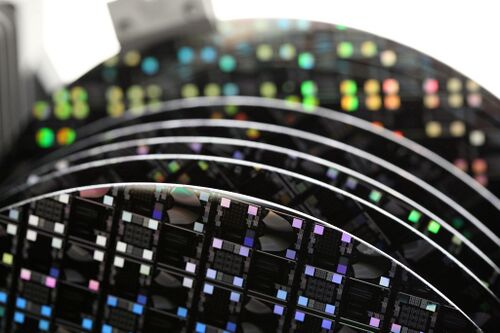Specific Process Knowledge/Lithography

Feedback to this page: click here
There are four different types of lithography available at DTU Nanolab:
Comparing lithography methods at DTU Nanolab
| UV Lithography | DUV Stepper Lithography | E-beam Lithography | Nano Imprint Lithography | |
|---|---|---|---|---|
| Generel description | Pattern transfer via UltraViolet (UV) light | Pattern transfer via Deep UltraViolet (DUV) light | Patterning by electron beam | Pattern transfer via hot embossing (HE) |
| Pattern size range |
~0.6 µm and up |
~200 nm and up |
~12 nm - 1 µm |
~20 nm and up |
| Resist type |
UV sensitive:
|
DUV sensitive
|
E-beam sensitive
|
Imprint polymers:
|
| Resist thickness range |
~0.5 µm to 200 µm |
~50 nm to 2 µm |
~30 nm to 1 µm |
~ 100 nm to 2 µm |
| Typical exposure time |
10 s - 3 min pr. wafer using mask aligners |
Process dependent:
Throughput is up to 60 wafers/hour |
Process dependent:
time [s] = Q*a/I |
Process dependent, including heating/cooling rates |
| Substrate size |
|
|
We have cassettes fitting:
Only one cassette can be loaded at a time |
|
| Allowed materials |
Any standard cleanroom material |
Any standard cleanroom material |
Any standard cleanroom material, except:
|
Any standard cleanroom material |
Equipment Pages
|
||
Lithography Tool Package Training
DTU Nanolab offers a Tool Package Training in Lithography; the course includes theory on lithographic processes and equipment. After the TPT has been successfully completed, you can begin training on the lithography equipment at DTU Nanolab.
You are required to pass this course, in order to get access to using the lithography equipment inside the DTU Nanolab fabrication facility (The Cleanroom).
For details, dates, and course material, please check the course description under Courses.
| Lithography Tool Package Training | |
|---|---|
| Signing up for the course |
The course is in DTU Learn. You sign up for the course by enroling yourself in the course "DTU Nanolab TPT: Lithography".
Select the course "DTU Nanolab TPT: Lithography"
|
| Learning Objectives |
Learn about the fundamentals of lithographic processing in a cleanroom:
|
Knowledge and Information about Lithography
